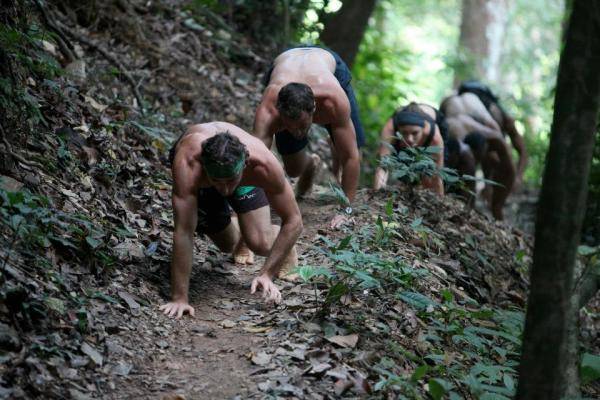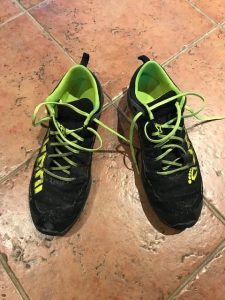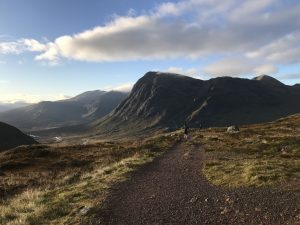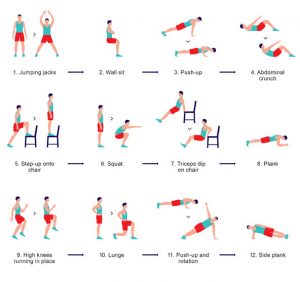
Movement and fitness have become optional extras for modern humans.
Most of us now spend the majority of our lives sitting for prolonged periods – at our desks, in our cars, on our sofas.
This prolonged inactivity has been linked to an increased incidence of cardiovascular disease, obesity, type 2 diabetes, certain cancers and increased all cause mortality. See here and here for some further reading.
Such chronic positioning also has negative impacts on the musculoskeletal system: over time, our bodies adapt subtly to the chair shape, making us unsuited to other less frequently performed movements, and prone to back pain and injury.
Even for those of us who try and exercise regularly, we tend to engage in repetitive activities such as running, cycling or bodybuilding, which can lead to overuse injuries, chronic pain and immobility.
We have become either soft or overspecialized, and have lost the ability to move in the same way as our ancestors, whose very survival depended on their ability to run, throw, carry and fight.
But it wasn’t always this way: look at the way young children play and move. Adults can learn a lot from the way they get up and down off the floor; the way they roll and crawl and climb naturally. Children generally run without heel strike and can squat fully and easily.
At some point in our lives we stopped playing and started sitting, and lost the ability to perform many of these important natural movements: running, jumping, climbing, balancing, crawling, lifting, carrying, throwing and catching, swimming and wrestling.
If you want to see if this applies to you, have a go at some of these basic movement skills at home (I did and was unpleasantly surprised at my lack of mobility):
- Can you move from standing to sitting on the floor and back up again? How easy is it? Can you get down and get up without using your hands?
- Can you perform a deep squat, keeping your heels on the floor? Can you hold this position comfortably for 10 minutes?
- Can you hold yourself in a dead hang from a pole or branch for 30 seconds or more?
- Can you perform a single pull up from a dead hang? You can? That’s fantastic – how many can you do without kipping (kicking) for assistance?
But does it really matter if we’ve lost the ability to perform these primal movements? After all, we no longer need to hunt down our dinner or be able to outrun predators.
Proponents such as Erwan Le Corre, the developer of MovNat (a fitness system based on natural movements), believe so. He suggests that practicing these innate skills will not only make you a more well-rounded athlete and improve mobility, but also that it has practical application in our everyday lives. In its purest form it will help reconnect us with nature, by training outdoors using the natural environment as our gym when possible.
To illustrate, a beginner’s natural movement workout might look something like this:
3-5 cycles of:
- Bear crawl 15m
- Leg swing jump to a precision landing (x 8)
- Deadlift (x 8) – preferably using a rock!
- Running at fast speed over 30m
- Balancing along a 3m long beam (x 8)
Advanced practitioners might progress to doing some of the following:
- Muscle ups on a pull up bar or tree branch
- Balancing farmers walk
- Rope climbs
- Log carrys
This functional approach to fitness is not new and was the mainstay of earlier versions of physical training in the 18th and early 19th Centuries, which emphasized gymnastic and calisthenic skills, such as the Methode Naturelle created by George Hebert.
What’s clear is that inactivity has become a major problem in our society and we urgently need to move more. But how often do we need to move? How intensively? What movements and exercises are best?
It may be possible to offset the effects of inactivity simply by doing more exercise. This study suggests that 60-75 minutes per day of moderate intensity activity may eliminate the increased mortality associated with sitting.
It’s likely that this is not a realistic option for most people who already struggle to do the recommended 30 minutes of exercise per day; we would perhaps be better off focusing on reducing our sitting time and finding ways to incorporate more movement into our daily routines, whilst still trying to fit in exercise when we can.
Could natural movement and functional fitness help address our inactivity and overspecialization?
The evidence base is limited here, but the idea of relearning natural movement skills makes sense, and the philosophy is appealing, with its focus on performing practical activities rather than repetitive, isolated movements, and a renewed connection to nature. There is certainly mounting evidence that contact with green spaces and natural environments is associated with benefits to mental and physical health.
Natural movement practice won’t appeal to everyone, but it does offer certain advantages: in the beginning it requires little or no equipment, no gym membership, it can be relatively time efficient and provides an interesting, holistic workout, combining both strength and aerobic conditioning.
However, as with other forms of bodyweight training, as you progress, the movements become harder and it helps to have some extra tools such as a pull up bar, kettlebells and a medicine ball, but of course these can be improvised using tree branches, rocks, logs etc if you really want to be strict about the natural ethos!
Finally, if you want some inspiration, check out this master class of natural movement, showing just what human beings are capable of.








